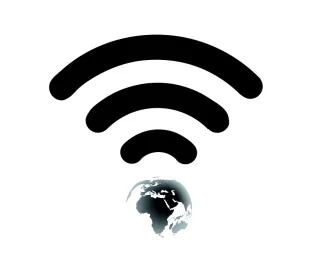Background
Amidst the ongoing power struggle between communications service providers striving for unfettered access to rights-of-way to place their facilities, and municipalities working to protect their authority over such rights-of-way, local governments retained a measure of control over the deployment of wireless equipment in their rights-of-way when the California Supreme Court held that municipalities may consider aesthetics when granting wireless installation permits.
T-Mobile (along with other wireless service providers such as NextG Networks and ExteNet Systems), challenged a San Francisco ordinance conditioning access to public rights-of-way on aesthetic considerations. In particular, the City’s ordinance No. 12-11 regulated the construction, installation, and maintenance of wireless equipment in order to prevent the placement of equipment in a manner that would “diminish the City’s beauty,” and required heightened aesthetic review in certain areas.
The companies argued that the ordinance was preempted by the state’s telecommunications franchising statute (California Public Utilities Code Section 7901), which grants telecommunications companies the right to deploy equipment along public rights-of-way in California as long as they do not “incommode” public use. The companies maintained that the term “incommode” referred only to the obstruction of travel, and thus did not permit local aesthetics-based regulation. They also argued that the ordinance violated the nondiscrimination prohibitions of California Public Utilities Code Section 7901.1, which requires local governments to exercise their “time, place, and manner” regulation of road access on “all entities in an equivalent manner.” In particular, they asserted that the ordinance violated the nondiscrimination requirements by applying the aesthetic requirements only to wireless providers, and not to other telecommunications companies accessing the rights-of-way.
Preemption
The California Supreme Court upheld the ordinance, first ruling it was not preempted by Section 7901. In doing so, the Court made clear that the state franchising requirements of Section 7901 and the local police powers held by the City could work in “harmony.”
The Court reasoned that while that Section 7901 prohibits localities from requiring communications providers to obtain a local franchise (which would grant service providers the authority to offer service in a local jurisdiction), the Court ruled that the City nonetheless retained local police power to regulate appropriate land use, including the establishment of aesthetic conditions for such land use. This authority did not amount to the power to require a local franchise, but rather constituted the power to require a permit. While denial of a (prohibited) local franchise would “completely bar” wireless operations within a city, denial of a valid permit “would simply prevent construction of lines in the proposed manner at the proposed location.” The Court also noted that the Public Utilities Commission, the state’s primary regulatory authority over utilities, has a “default policy…of deference to municipalities in matters concerning the design and location of wireless facilities” unless local decisions clearly contradict the Commission’s statewide goals (such as the widespread deployment of high quality and reliable service across the state).
With respect to whether the ordinance’s use of the term “incommode” encompassed aesthetic conditions, the Court stated instead that the more relevant question was whether Section 7901 was intended to divest the City of its inherent power to regulate land use. The Court ruled there was no indication that the state intended Section 7901 to do so, and that without a “clear indication of preemptive intent,” a state statute would not deprive local governments of power in areas over which they have “traditionally exercised control,” such as the “power of controlling location and manner of installation.”
Nevertheless, the Court found the term “incommode” to have a much broader meaning akin to “disturb” or “give inconvenience to,” and not merely referring to the obstruction of travel. Thus, the City’s use of the ordinance to regulate aesthetics was appropriate under Section 7901.
Nondiscrimination
The Court also ruled that the ordinance did not violate Section 7901.1’s nondiscrimination requirements. In doing so, the Court first observed that the City required short-term, temporary permits of all utilities (including both wireline and wireless communications companies) accessing public rights-of-way for the purpose of initial construction and installation of facilities (the process for which did not require the review of aesthetic considerations). The Court also observed that the City required long-term permits for the permanent occupancy of equipment installed in the rights-of-way – a process that did include the review of aesthetic considerations, and only applied to wireless companies (whose facilities tend to remain prominently visible in the rights-of-way after installation).
Looking to the state statute’s legislative history, the Court found that Section 7901.1 was limited to temporary access permits controlling time, place, and manner restrictions (which the parties had all stipulated during trial were applied equally to all companies by the City), and that it was reasonable that a municipality would control the time, place, and manner of initial temporary access to the rights-of-way, while regulating the longer-term permanent impacts that might “incommode” access to the public rights-of-way under Section 7901.
Broader Implications and Limitations
This decision clarified the bounds of local control over wireless facilities deployment in the face of state and federal regulations. Under the ruling, cities may regulate the long-term effects of wireless deployments, and service providers should thus keep in mind that local governments can delay deployments that do not meet aesthetic standards. Further, municipalities may take into account a wide range of considerations beyond aesthetics under the “incommode” language of Section 7901, including noise, public health and safety, and other similar concerns.
The decision may also be of interest to other state franchisees. By confirming that Section 7901.1 applies only to temporary access in public rights-of-way (for the installation of communications facilities), and rooting the power to impose aesthetic regulations in preemption considerations and the broader language of Section 7901, the opinion also has important implications for the application of California’s Digital Infrastructure and Video Competition Act of 2006 (“DIVCA,” under which video service providers such as cable operators are granted statewide franchises giving them authority to access the state’s rights-of-way and to provide video service). In particular, while DIVCA Section 5840(a) prohibits local entities from requiring state video franchise holders to “obtain a separate franchise or otherwise impose any requirement on any holder of a state franchise except as expressly provided,” DIVCA Section 5885 incorporates Section 7901.1, meaning local authority to impose time, place, and manner restrictions would be limited to temporary access for installation purposes (and not access for the long-term placement of wireless facilities). However, because DIVCA specifically references Section 7901.1, and not Section 7901, state video franchise holders would not be subject to the more extensive “incommode” standards that could be read into Section 7901.
The case is T-Mobile West LLC et al. v. City and County of San Francisco et al., 6 Cal. 5th 1107 (2019).



 />i
/>i

